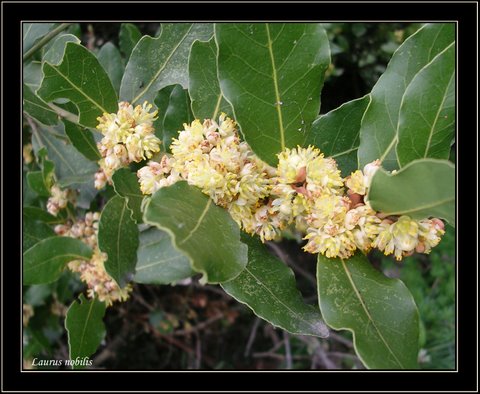Cool weather reminds me of the spice cinnamon. A spice that is warming to the soul, whether you have it mulled with hot cider or place a stick in your hot chocolate or coffee. This spice is usually used when baking and some like it with pork.
Cinnamon has been around for thousands of years. The Egyptians would incorporate the spice in their embalming mixtures. It was one of the spices that spurred world exploration. The Romans would pay dearly for it and it was highly valued.
The spice comes from a small tender evergreen tree, with inconspicuous yellowish flowers that rise in long pannicles. The leaves are bright red, turning green as it matures, glossy; opposite and about 7 inches long. The tree can grow up to 40 feet in height. The part that is used is the inner bark. As it dries, it curls into sticks or quills. These sticks are then used whole or ground.
East Indian, Moroccan, Chinese, Indonesian, Arabic, Iranian, Scandinavian, Mexican, Hungarian and Greeks use the spice not only with savory meats, but in their desserts. It stimulates the flavors of carrots, spinach, onions, apricots, cherries, apples, blueberries and oranges. It compliments vanilla, fennel, nutmeg, ginger, freshly ground pepper, clove and cardamom. Flavorful in fruit pies to meat pies.
Here's something you can make using cinnamon sticks and other spices, to help freshen the air during the winter months. Take pieces of cinnamon sticks, cloves, broken nutmeg and some ginger root and place it in an open pot of water and simmer for about 15 minutes. Make sure you keep an eye on the water level. The spice scent is soothing and welcoming, especially if you will have guests later in the day. You can also create your own dry potpourri, using dried flowers that you grew this past year, adding cinnamon chips, cloves and allspice and nutmegs crushed. Since people can be allergic to essential oils or fragrances, this is a natural scent. For dried potpourri, have it in a enclosed container and when you want to freshen up the room, take the lid off for about 20 minutes, then recap. This will improve the potpourri to mature in scent and you will find with time, it smells better than when you first mixed it.
 So the next time you look at the cinnamon you have in the cupboard, think of how you can use it as a tasty addition to your menu. Add a stick to orange or apple juice as it chilling, add it to flavor your hot tea or coffee or the next time you glaze carrots. Remember, cinnamon is not only for your pies.
So the next time you look at the cinnamon you have in the cupboard, think of how you can use it as a tasty addition to your menu. Add a stick to orange or apple juice as it chilling, add it to flavor your hot tea or coffee or the next time you glaze carrots. Remember, cinnamon is not only for your pies.Enjoy!
Our potpourri mixture has dried sliced oranges, cinnamon sticks, cloves, allspice, bay leaves, citrus peels and tonka beans (which gives it a slight vanilla scent). No essential oils or fragrances are used.











